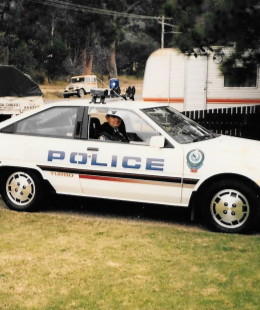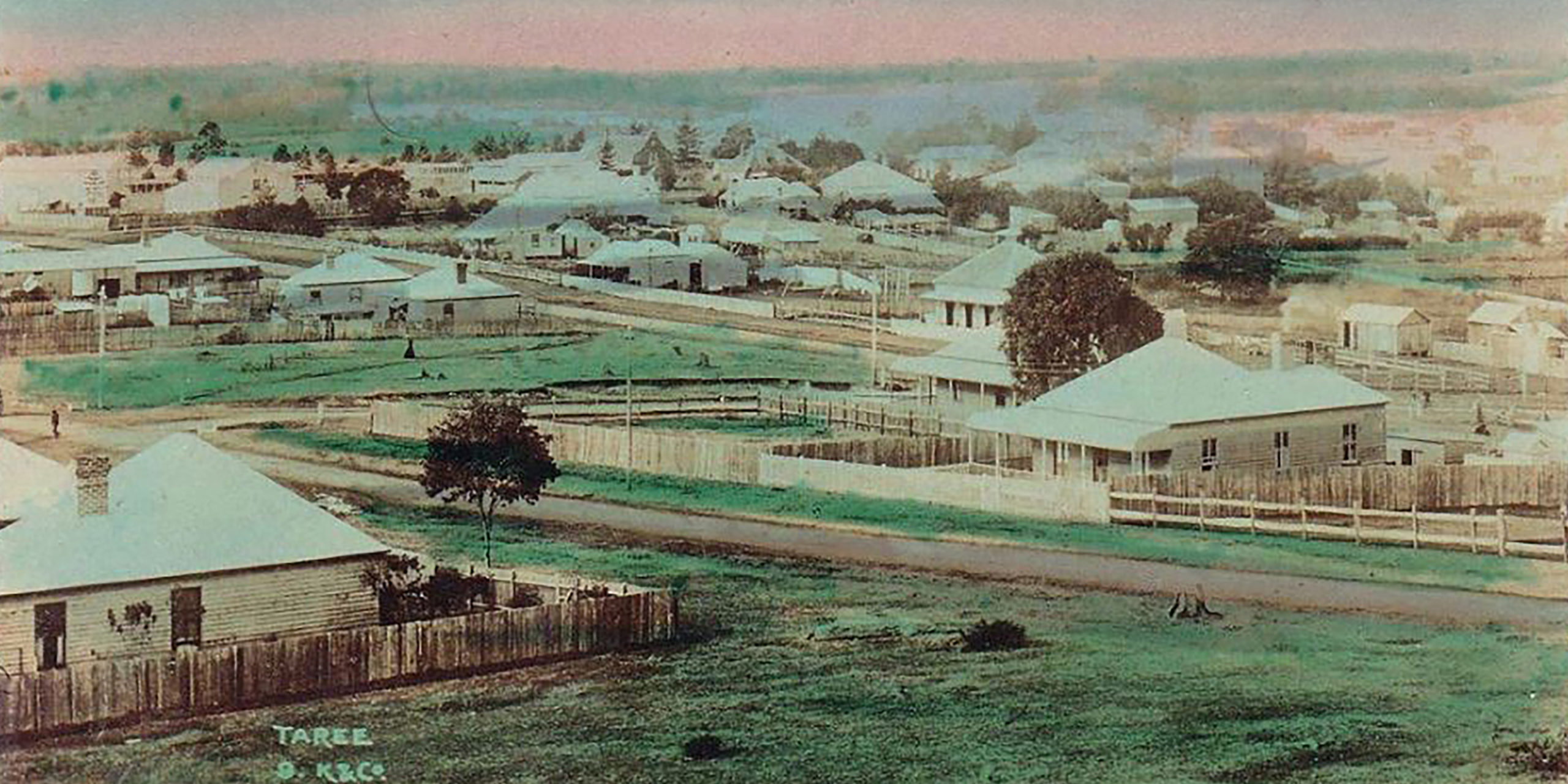
Archaeology at Taree Police Station
The work and life of police in regional NSW was further revealed in a recent archaeological excavation at Taree Police Station.
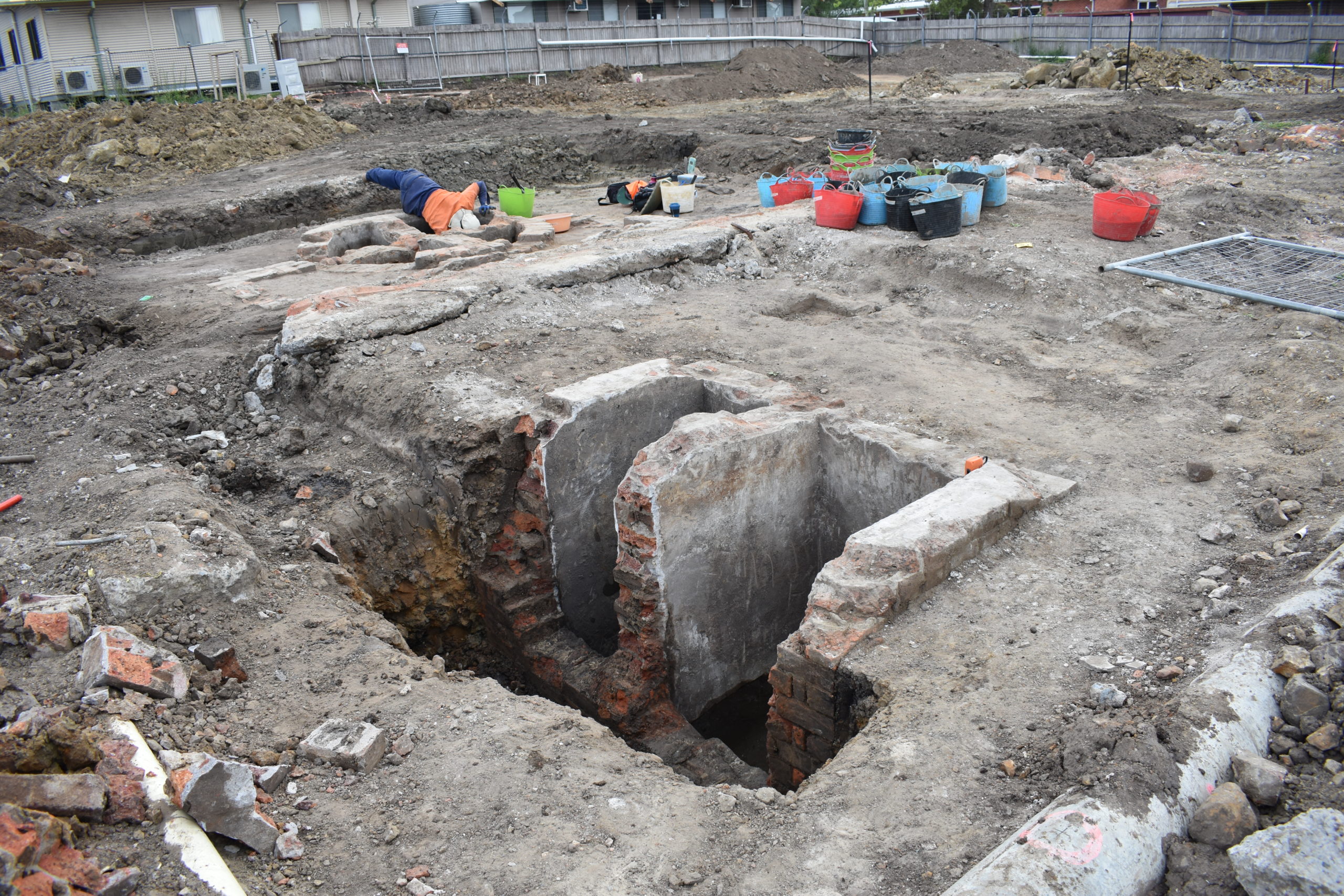
BGIS, on behalf of the NSW Police Force, engaged GML Heritage Pty Ltd (GML) to provide archaeological and heritage services. You can view the summary Excavation Report in PDF format here.
Taree Police Station is significant for its long and continuous association with the NSW Police Force and the maintenance, promotion and enforcement of law in Taree since 1863. The former police station and associated stables, along with the current courthouse, had been on the site since 1884.
GML acknowledges that this work was undertaken on the lands of the Biripi and Worimi groups. A program of Aboriginal archaeological test excavation was completed in advance of the development with representatives from the Purfleet / Taree Local Aboriginal Land Council and is reported on separately.
The archaeological excavation uncovered remains of four brick cesspits, two brick cisterns, and the sandstone footings of the Sergeants Residence, shed and plumbed brick toilet block.
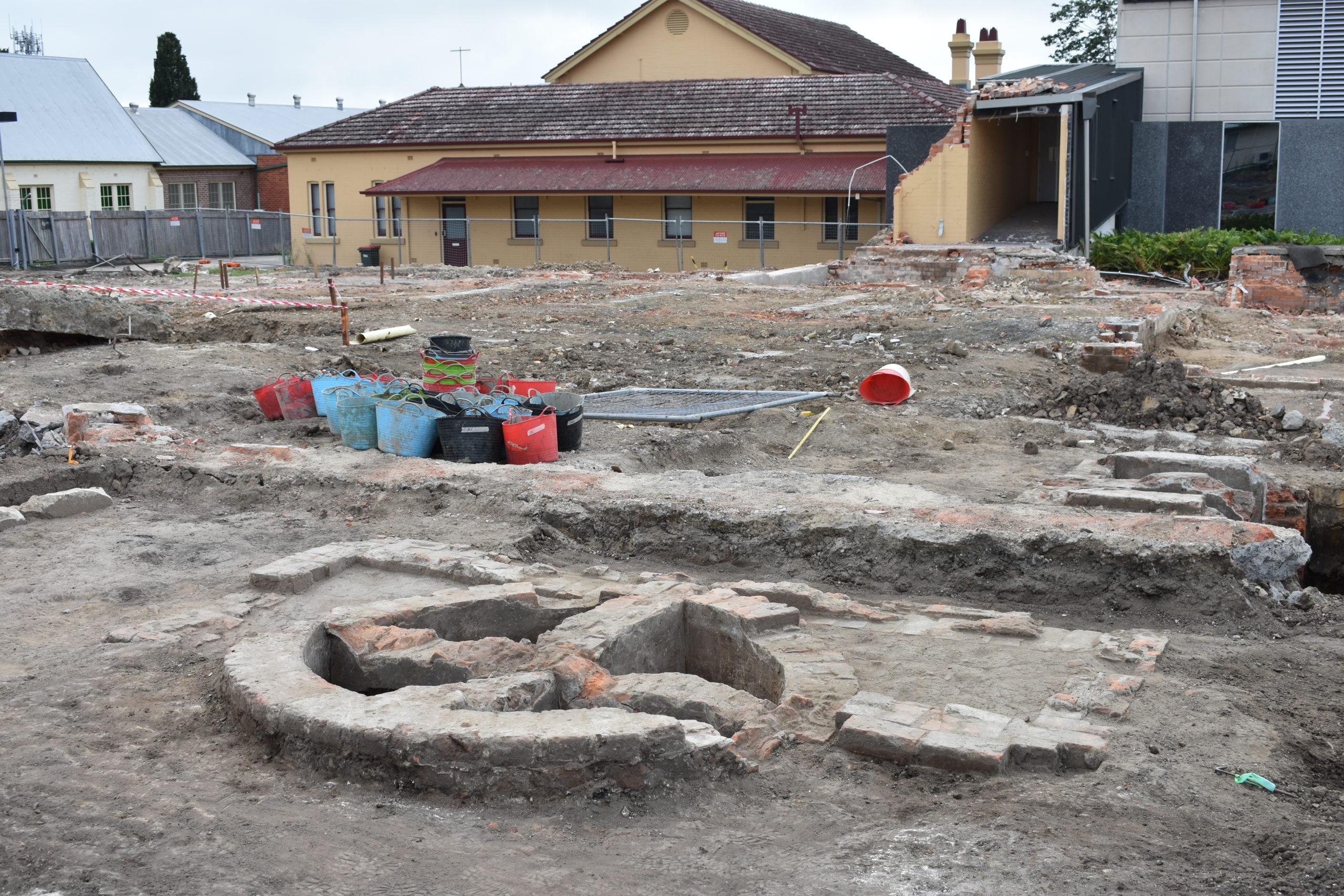
The 1884 police station and stables (converted to a garage in the 1940s) were demolished in 2018 and were not included in the archaeological investigation.
The layout of the police station complex at Taree was typical of the period. In NSW, the typical town police station was located behind the courthouse and functioned as both an administrative and residential space rarely accessed by the public.[i] The design of the police station at Taree included residential accommodation, along with offices for police staff, cells and an exercise yard with attached cesspit.
No evidence of the 1864 police lockup was identified. The building may have been demolished and the bricks re-used in later structures built for the 1884 police station. A cesspit built behind the courthouse contained sandstock bricks, possibly dating to the 1850s, that may have been recycled from the earlier lockup.
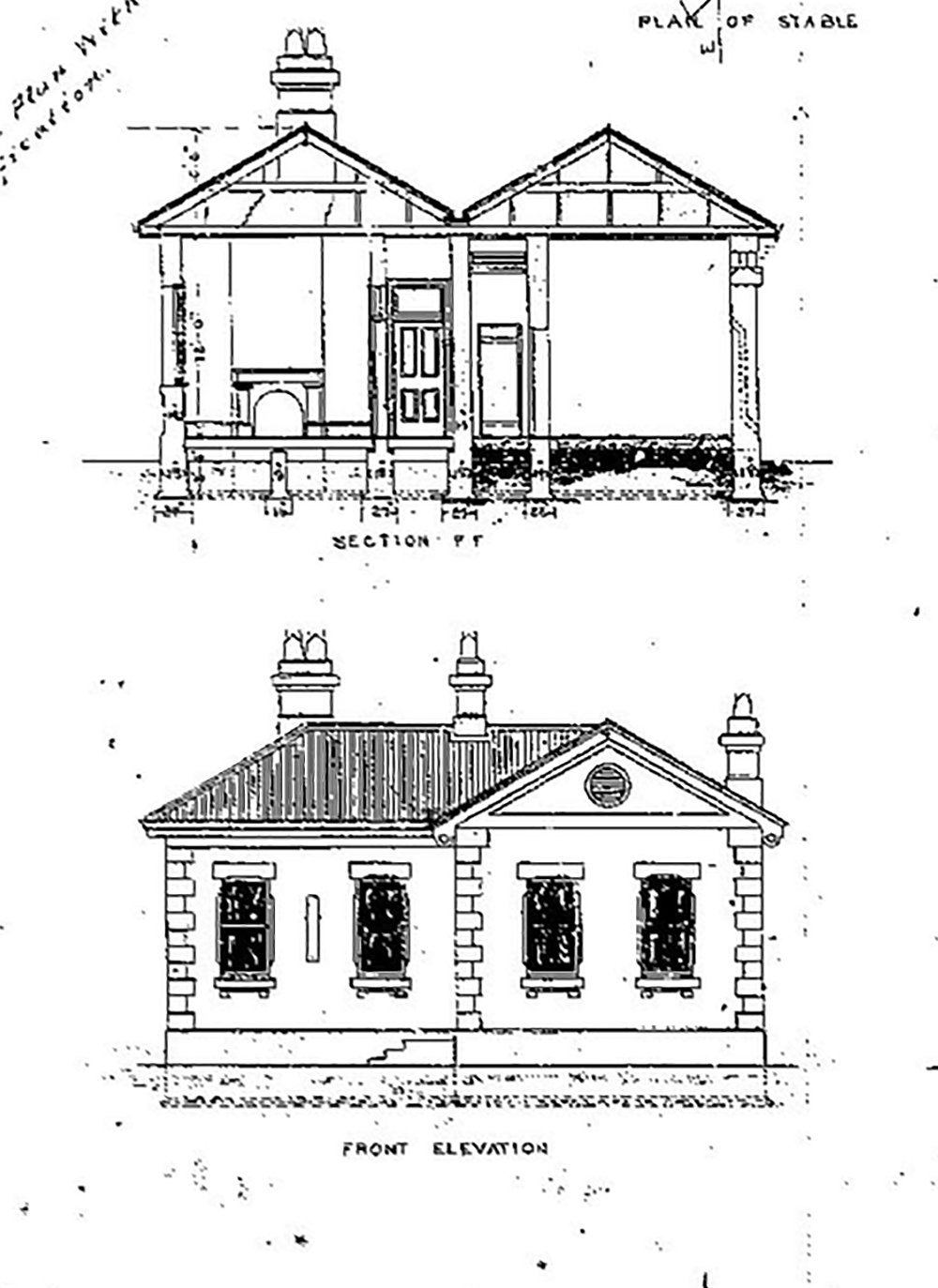
Three circular cesspits (pit toilets) were found on site—one behind the courthouse, and two behind the police station. The cesspits featured an unusual design that may have been a local innovation.
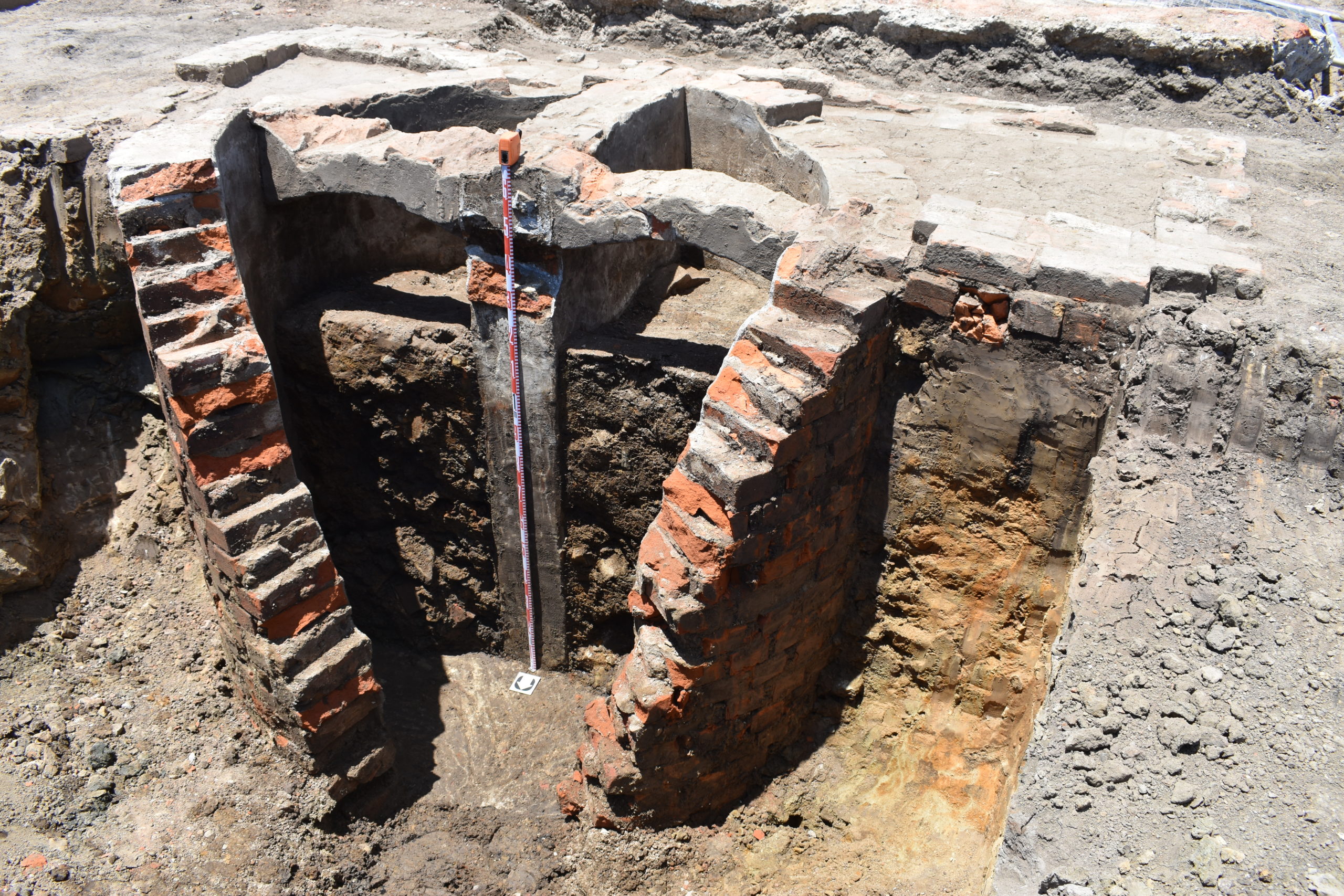
The cesspits typically measured 2m in diameter and were up to 1.5m deep. Each was constructed from a single row of bricks bonded with either a lime or cement mortar and rendered on the inside with cement. The interior was divided into quadrants by an internal wall and three brick arches. Cesspits found on other archaeological sites were square or rectangular in plan with one or two chambers. A plan of the design shows each cesspit would have featured a two-cubicle brick building surrounded by a timber screen. Rectangular brick footings were found surrounding one of the cesspits, while the timber screen had been put into another cesspit when it was demolished.
With the growing awareness during the nineteenth century of a link between contaminated water and infectious diseases, new laws were brought in to manage sewerage in 1876. Here, the circular cesspit design may have been an innovative approach to managing waste.
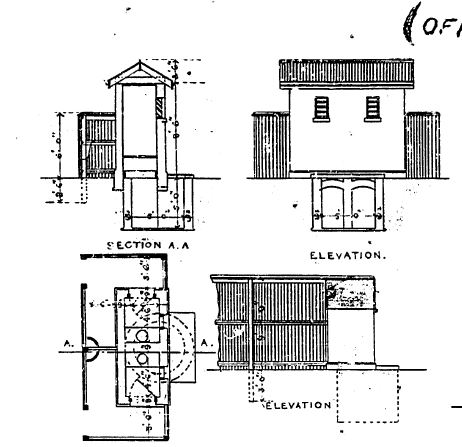
Policing
Objects related to daily police work were found in the rubbish pits and cesspits excavated on site.
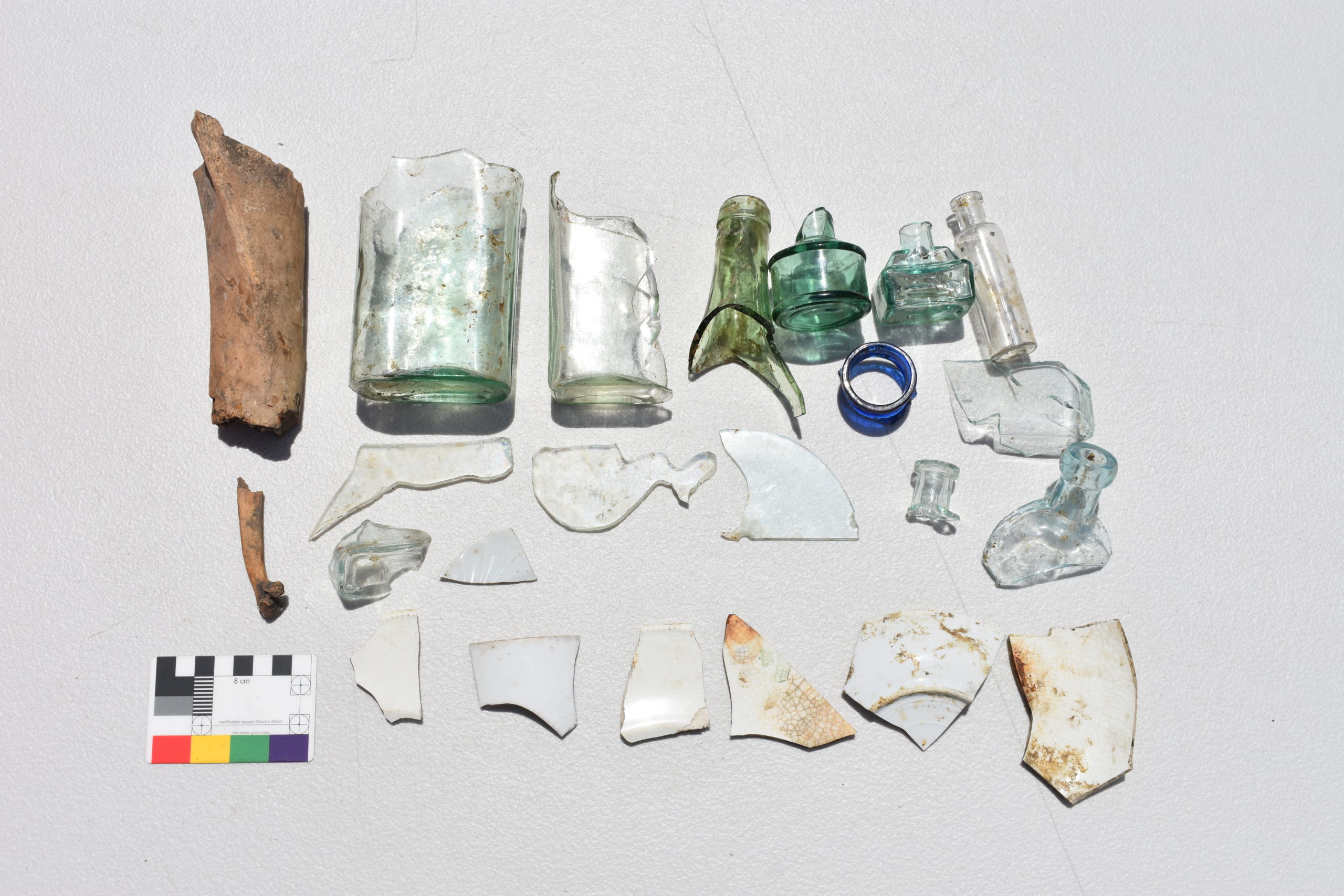
This included a centre-fire revolver made after 1880, and a police helmet badge bearing the insignia of Edward VIII (1936).
One automotive and three motorcycle licence plates were also recovered and suggest that cars and motorcycles were introduced in the 1920s. In NSW, the first police car was introduced in 1915, with a significant increase in vehicles issued after 1925.[ii] However, horses appear to have still been kept on site as the stables was not converted into a garage until 1947. Two horseshoes and a hay fork found in a rubbish pit with a range of artefacts of early twentieth-century date also suggest the continued stabling of horses on site during this transition period.
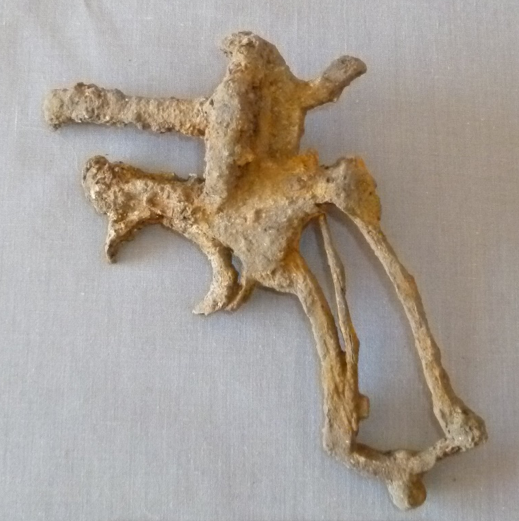
Police Dogs
Remains of at least 14 dogs were uncovered during the excavation. Analysis suggests several different breeds were kept, including Border Collies or Kelpies and German Shepherds. The dogs were likely kept for a variety of reasons: as pets, for security and as working animals. The station probably kept one or possibly two dogs at a time, with the number of animals suggesting that this practice continued for an extended period of time (20–30 years, possibly longer).
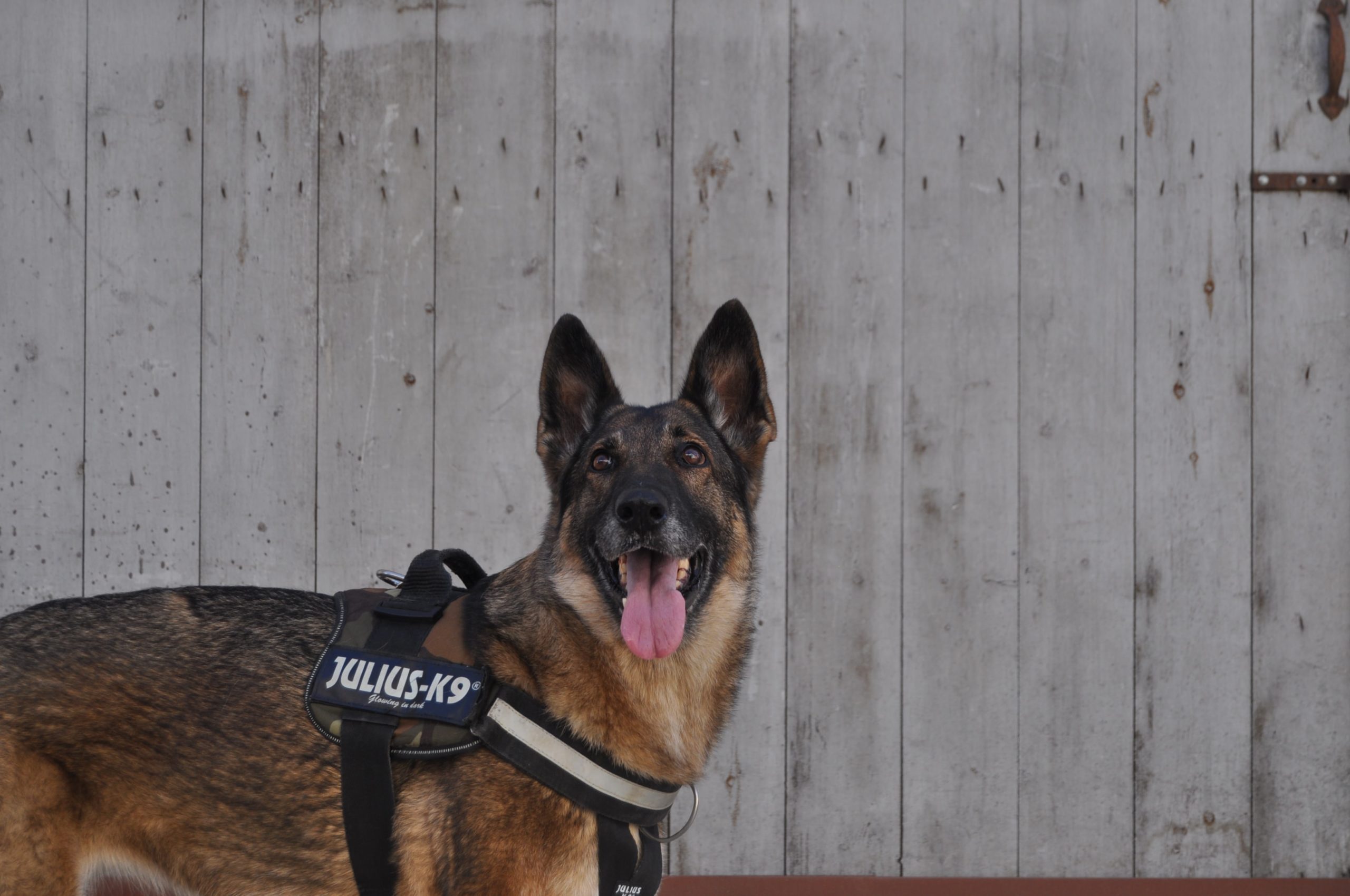
The use of dogs by the police in Australia appears to have been an informal process, until the formation of the NSW Police Dog Squad in 1932. Newspaper articles from the early twentieth century report that the use of dogs by police was uncommon, which would suggest that the dogs were kept on site as either pets or for security.
Tess, a trained Alsatian, … thought nothing yesterday of burning hoops and 12 feet jumps.[iii]
The care taken in burying each dog and the continued use of a designated space within the station grounds for their burials points towards the regard the police staff held towards these animals.
Remains of a neonatal calf were also found buried amongst the dogs. The calf was likely kept as a pet by a family living at the station.
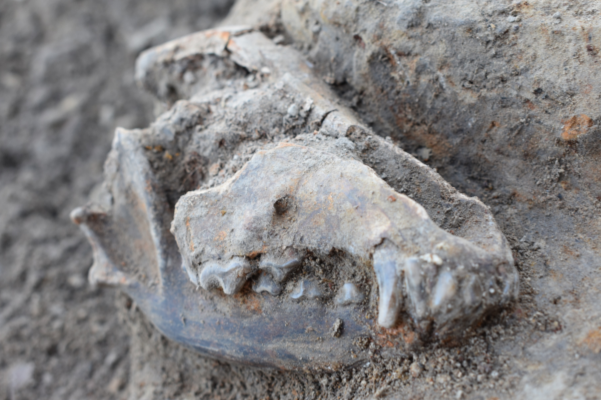
Police Life At Work…
Artefacts recovered from six rubbish pits and a cesspit deposit provide information on the lives of the police officers and their families.
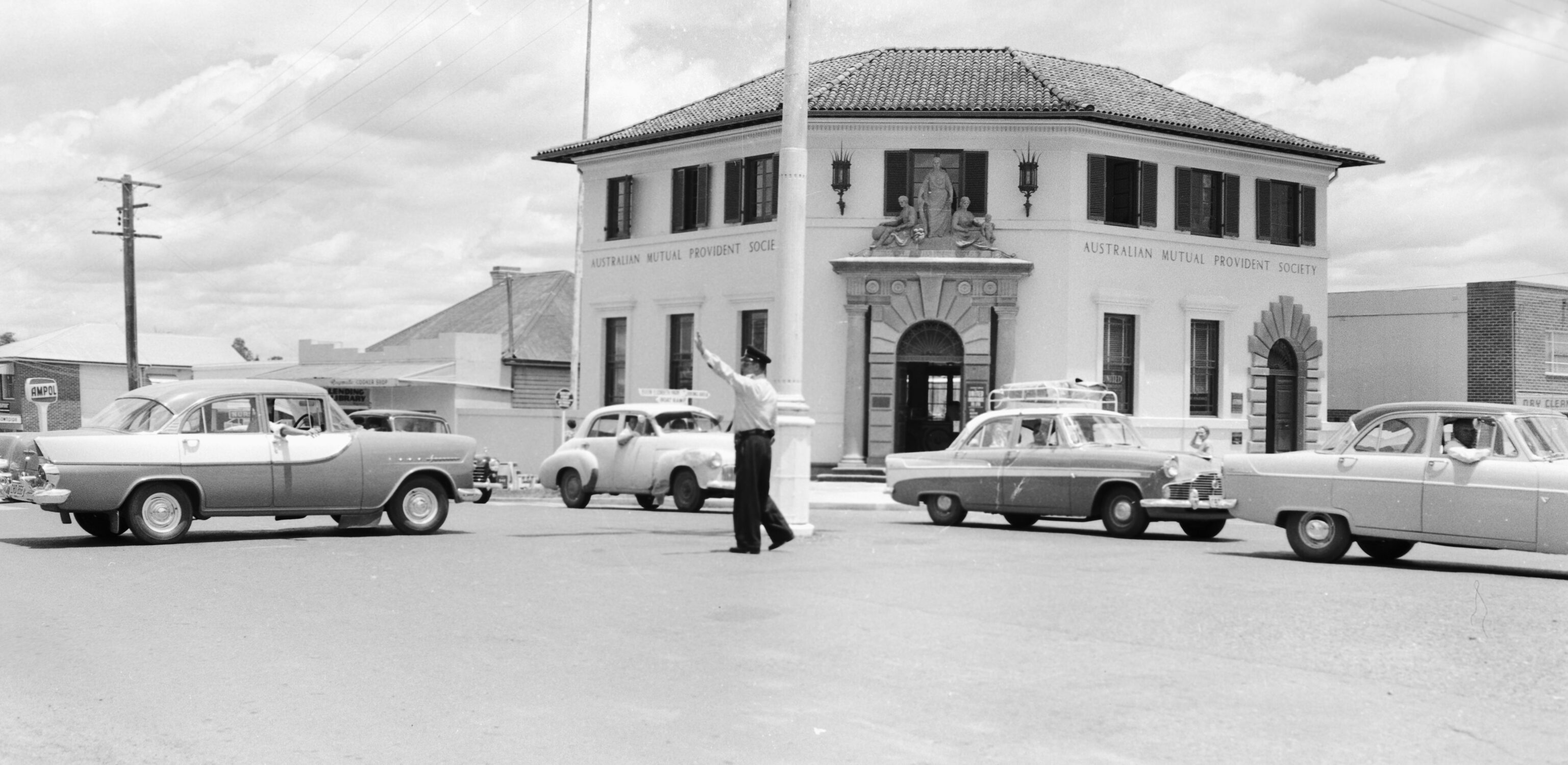
The range of artefacts relates to both the operational functions of the police station and the domestic lives of the people who lived on site from the c1880s to the 1930s.
A collection of 19 ink bottles shows the volume of clerical work that would have been undertaken by staff at the station. While a cough remedy bottle, a purse clasp, clay pipe, shoe sole, button, four peach pips and a glass flask and stopper made their way into the cesspit attached to the exercise yard. These items are a snapshot of everyday activities at the station—broken shoes and clothing, lost property, minor illnesses.
A small desk clock and a plain pocketwatch reflect the need for accurate timekeeping and records.
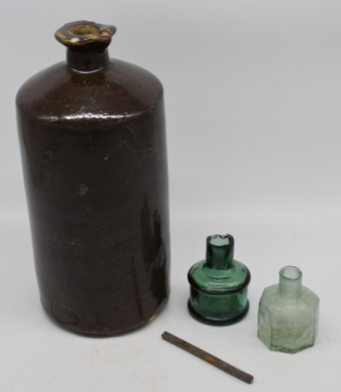
…and At Home
Domestic objects included a transfer print dinner service in the ‘Phyllis’ pattern, flint glass cruet, and a cut-glass tumbler. Branded bottles indicated a range of imported products, particularly condiments and alcohol, along with several Sydney and Parramatta based companies.
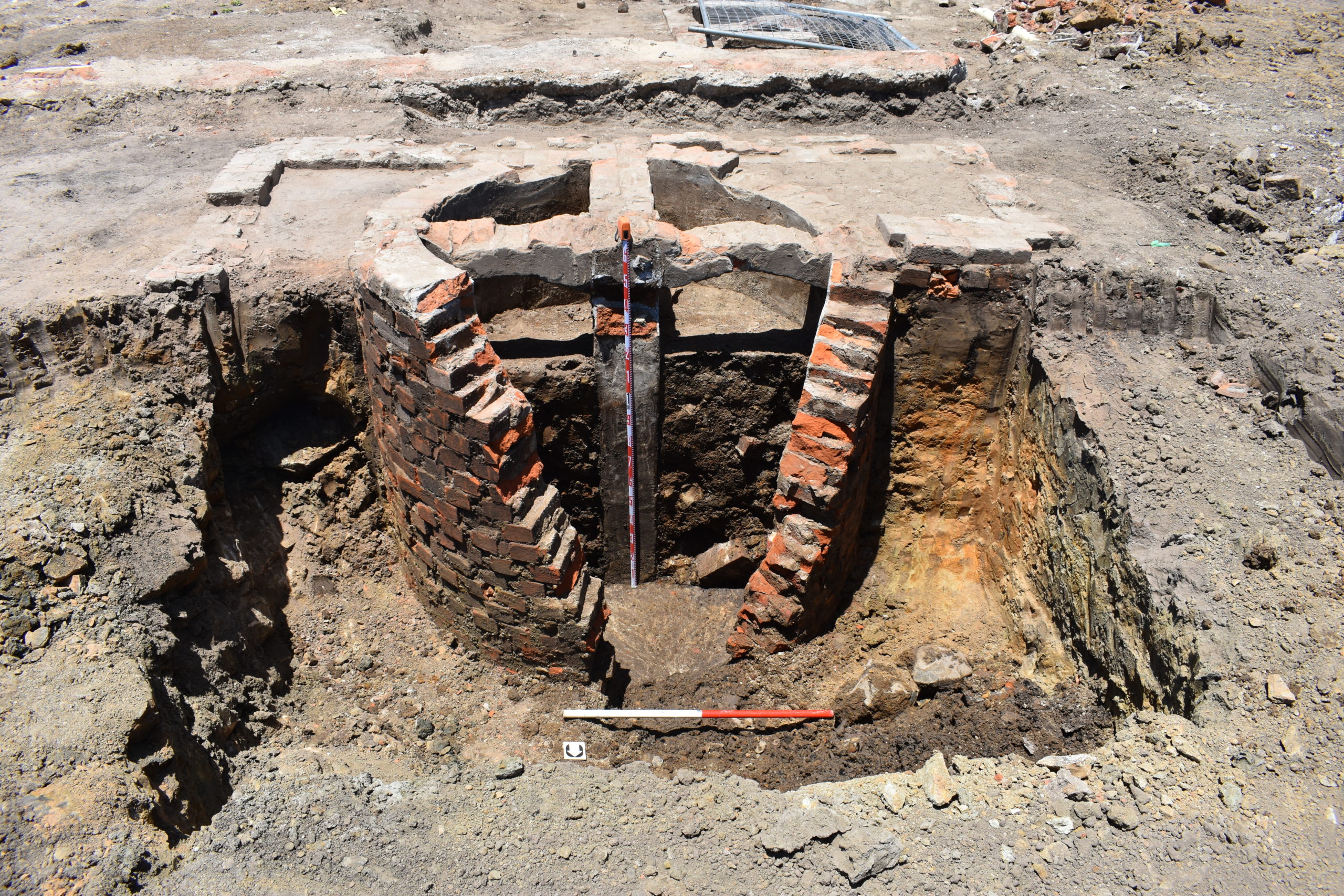
Access to such a range of products was likely enabled by the weekly steamer service that visited Taree weekly, travelling between Sydney and Port Macquarie until the construction of the train line in 1913.
A locally manufactured product from Saxby and Coleman, who produced cordial and aerated waters in Taree, was part of the assemblage. Their factory was located on Albert Street opposite the police station from 1898.
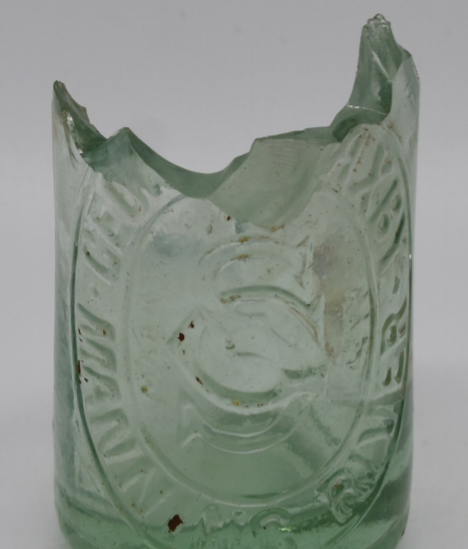
In addition to the typical range of domestic animals (cattle, goat and chicken), remains of native animals including pademelon, rat-kangaroo and koala bones were recovered from a cesspit deposit.

Hunting or trapping native animals may have been a means for individuals to supplement their diet, a situation also seen on other archaeological sites in rural NSW.[iv]
This report was completed by Site Director and GML Senior Consultant, Sophie Jennings. GML Principal, Abi Cryerhall, was the Excavation Director.
Notations
[i] O’Donnell, CB 1993, ‘Police Stations in New South Wales: A Historical Theme of the development of Police Stations in New South Wales’, Master of Built Environment (Building Conservation), University of New South Wales, Sydney, 14.
[ii] Australian Police, ‘Police Car Index’, accessed on 17 February 2021 <https://www.australianpolice.com.au/police-car-index/>.
[iii] Sydney Morning Herald, 15 February 1934, p 14.
[iv] Blake, N 2010, ‘Diet in urban and rural nineteenth-century New South Wales: The evidence from the faunal remains’, Australasian Historical Archaeology, vol 28.
